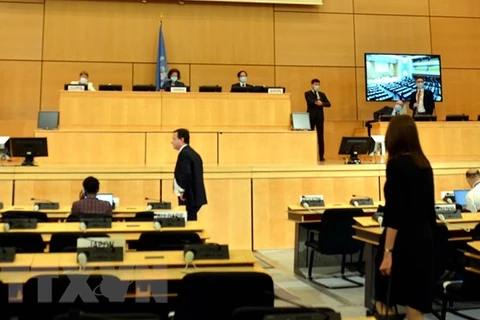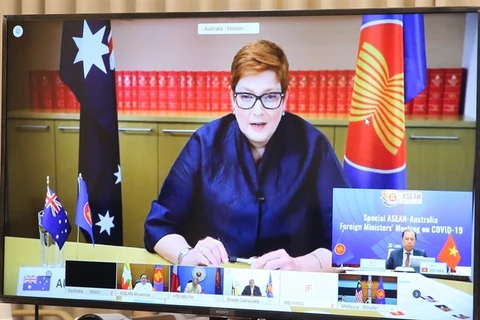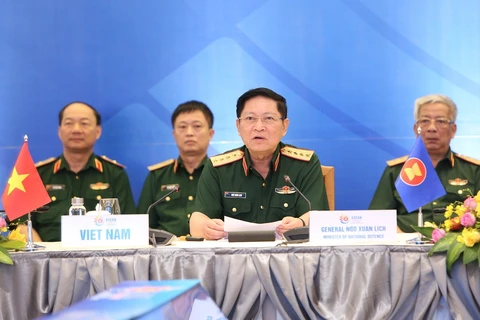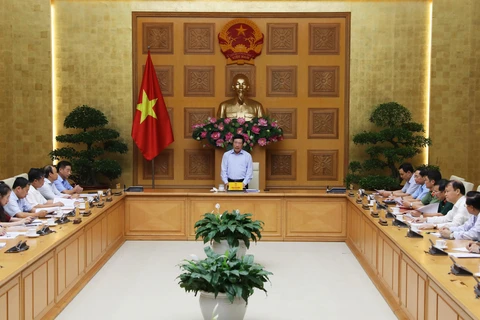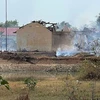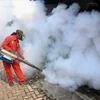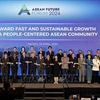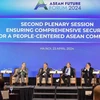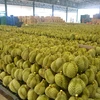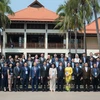 Vietnamese Prime Minister Nguyen Xuan Phuc (C) speaks at the opening ceremony of the 36th ASEAN Summit (Photo: VNA)
Vietnamese Prime Minister Nguyen Xuan Phuc (C) speaks at the opening ceremony of the 36th ASEAN Summit (Photo: VNA) Hanoi (VNA) - Southeast Asia was the first region in the world to be affected by COVID-19 due to its geographic proximity and close trade relations with China, where the outbreak began.
The pandemic became a major challenge for the Association of Southeast Asian Nations (ASEAN) in the context of 2020 being an important year in the implementation of the ASEAN Community Vision 2025.
It has been six months since the first cases were reported in the region. The Philippines recorded its highest death toll ever on July 13, of 162. The number of infections has tripled since it eased restrictions on June 1, which has forced the country to reimpose a lockdown in an area of the capital Manila where about 250,000 people live.
Indonesia, meanwhile, has been one of the countries hardest hit by the pandemic, with nearly 77,000 infections, and has recently detected a new outbreak relating to a military academy in West Java, with nearly 1,300 people testing positive for the coronavirus.
Vietnam has now gone almost three months without any community transmissions and over 94 percent of its 373 cases have been given the all-clear. Of particular note, there have been zero fatalities.
The country has been widely recognised by the international community as having successfully fought the pandemic. The ASEAN Post called on the bloc’s member states to take Vietnam as an example to learn from.
Thailand has also recorded no new local transmissions for more than a month, while Laos has reported no new cases for over 90 days.
This means that most ASEAN countries have basically curbed the disease and gradually returned to the “new normal” with low rates of fatalities or none at all.
The regional fight against COVID-19, however, remains difficult, as some countries are at risk of a second wave.
The ASEAN countries have been proactive in preventing the spread of the disease. Vietnam was evaluated by the US magazine “The Nation” as adopting the most effective response to COVID-19, with a “proactive strategy to keep infections to a minimum”.
In face of the unprecedented challenge, the leading role Vietnam played as rotating Chair of ASEAN has been clearly demonstrated. Under its chairmanship, ASEAN has organised a series of video conferences to discuss how to cope with the pandemic, in particular the ASEAN and ASEAN+3 Special Summits on COVID-19 in April.
Member countries agreed to accelerate the implementation of four initiatives, including the COVID-19 ASEAN Response Fund, ASEAN regional medical material storage, standards to respond to emergency public health issues, and post-pandemic recovery plans.
Vietnam’s responsible role was further demonstrated by the 36th ASEAN Summit in late June, with the adoption of an “ASEAN Leaders’ Vision Statement on a Cohesive and Responsive ASEAN: Rising Above Challenges And Sustaining Growth”, and an ASEAN Declaration on Human Resources Development for the Changing World of Work.
Founded in 1967, ASEAN groups together ten member countries: Brunei, Cambodia, Indonesia, Laos, Malaysia, Myanmar, the Philippines, Singapore, Thailand, and Vietnam./.
VNA
